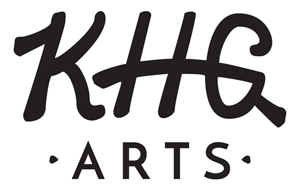
Do you want to hear a story?
I debuted this embroidery pattern, “Divine Feminine,” last fall and you can now buy your own copy of it here. It’s chock full of some interesting symbols and juxtapositions that speak to my own cultural lineage (and, I suspect, to many germanic-scandinavian midwesterners). This design is a feminist take on age old symbols, many originating in European mythology, which underscore woman’s connection to nature, innate power, and steadfast will.
 From L to R: Saint Augustine by Philippe de Champaigne, circa 1645, Oil on Canvas, Collection of LACMA; Painted Iron Hand in Heart Sculpture, C.H.Dawson, Odd Fellows Lodge, 1901, Private Collection; Felt and Leather Heart in Hand Pen Wipe, Unknown Artist, circa 1850-1900, Private Collection.
From L to R: Saint Augustine by Philippe de Champaigne, circa 1645, Oil on Canvas, Collection of LACMA; Painted Iron Hand in Heart Sculpture, C.H.Dawson, Odd Fellows Lodge, 1901, Private Collection; Felt and Leather Heart in Hand Pen Wipe, Unknown Artist, circa 1850-1900, Private Collection.
The central motif is the “heart in hand” symbol that has its roots in sacred heart imagery of the Catholic church. This secular version can be found in German-Dutch folk art, Odd Fellows ceremonial items, and in the Shaker community. In this context, it connotes personal charity and fellow feeling. In the Shaker tradition, this symbol is closely tied to the words of the orders founder, Mother Ann Lee, “Hands to work and hearts to God.” Shaker Museum | Mount Lebanon. Sampler. https://shakerml.org/object/?id=1894. Accessed on April 15, 2020
Shaker Museum | Mount Lebanon. Sampler. https://shakerml.org/object/?id=1894. Accessed on April 15, 2020
For me, a maker who finds relief, connection, and purpose in using my own two hands to create on a daily basis, this sentiment emphasizes the validity and honesty of this work in such a simple yet meaningful way. Of course, I couldn’t resist subverting it just a bit!
Victorian Jet Mourning Pin Hand Holding Flowers Brooch, 1840’s, Private Collection.
To the hand, I added a bit of black lace as is often depicted in Victorian mourning brooches of women’s hands, like the one above. I liked this both visually and how it can play on our ideas of what/who constitutes “traditional” womanhood.
Within the hand and just under the heart, you’ll see three small interconnected moons–this is the symbol of the Goddess in triplicate–the maiden (waxing crescent), mother (full moon), and crone (waning crescent)–together, the Divine Feminine. I border on agnostic these days, I must admit, but find something genuine and empowering in the concept of this natural cycle of rebirth and the passage of time, in nature’s power and precepts. I think about being connected to it and inspired by it all each spring when I plant a garden, learning new things about how each plant has been propagated and used throughout history. I think about it at the harvest and as colder days settle in when the garden is put to bed for the winter, under its snowy blankets.
For this reason, I rounded the design out with different plants and animal symbols. It was important to me to not be appropriative so I chose items based on meanings from my own European heritage. Perhaps they hold meaning for you as well? The two pine boughs encircling the central hand represent the sacred groves and their role as places of spiritual connection in both Germanic paganism and romanticism…it could be argued, I think, that the descendants of these philosophies could include Thoreau, the Transendentalists, Muir, and anyone who finds as much, if not more meaning in the cathedral of the woods than the wooden church.
The acorn, of course, speaks of limitless potential and of the steadfast strength of the tree it will become. The toadstool, popular in early European mythology, represents insight and wisdom due to its hallucinogenic properties. I included the paw print and feather to tie in the elements of earth, sky, and fauna. All of it sits beneath the arched phases of the moon, speaking of time and our place in it.
If you stitch this up, I’d love to see what colors you choose. Do they have specific meanings for you? Will you substitute some of your own symbols around the hand? Tag your work with #khgarts on Instagram so I can see!



Leave a Reply